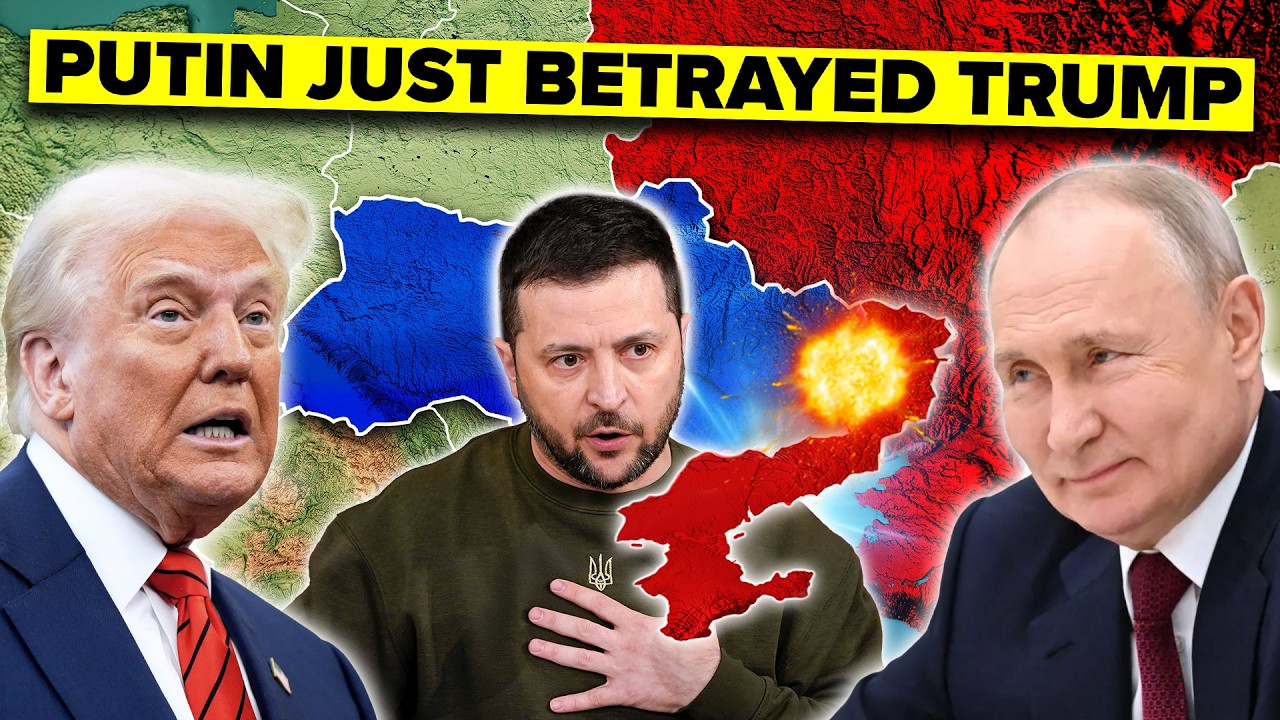Trump thought he had it locked down. A ceasefire in Ukraine. Both sides nodding yes. No more
missiles, no more bloodshed—just a deal that could’ve changed everything. But then? Putin
pulled the rug. Not only did Russia ignore the ceasefire—it ramped up the attacks. Now,
Trump’s Cabinet is in full-blown panic mode. The plan’s unraveling. The pressure’s mounting.
And
no one saw this betrayal coming this fast. So what went wrong? Did Putin play Trump from the start?
Is there still a way to salvage the deal—or is the war about to explode again? This episode breaks
down the backstabbing, the fallout, and what Trump—and NATO—can actually do now. Buckle up.
This one’s wild. First, let’s review the actual timeline of Trump’s negotiations with Ukraine
and Russia, focusing on the potential ceasefire agreements that he tried to broker between the
two countries. Until Trump’s inauguration on January 20, there had been virtually no
progress on even attempting peace negotiations between Ukraine and Russia. Various countries
made proposals for possible ceasefire agreements, but they were rejected by one or the other side.
The representatives from Ukraine and Russia met three times between 2022 and 2024 but reached
no
agreement due to the vastly different stances on the progress of the war, specifically how
unlikely either side was going to win significant territory. This was further complicated by Ukraine
managing to invade Kursk in 2024, gaining a large foothold in Russia’s own territory and
cementing its intent to keep fighting until a beneficial agreement (for Ukraine) was reached.
Even before Trump’s inauguration, he made several bold claims about his ability to “solve” the war
diplomatically. Specifically, he pointed to his amenable relationship with Putin over the previous
decades as a way to reach diplomacy with Russia. In fact, one of his most famous pronouncements
was that he could end the war in Ukraine in a day if only he were given the chance to do so. When
Trump assumed office, he tried to do just that, either directly or through his administration,
and the U.S. took a far more aggressive and active stance in Ukraine-Russia relations. This led to
a significant increase in meetings and peace proposals. However, there was a marked shift in
how the U.S. approached the peace agreements. The administration of former President Joe Biden had
previously wholly supported the Ukrainian effort, specifically its intent to join NATO and keep its
pre-war territory (and possibly even gain Crimea back). The Trump administration took a different
route, trying to end the war as soon as possible, even if that would give significant concessions
to Russia, considering it had occupied roughly 20% of Ukraine’s territory over the past three
years. This was further complicated by Ukraine’s possible admission into NATO which directly
contrasted Russia’s supposed national security and integrity concerns. Simply put, the two sides
couldn’t agree on any kind of middle ground, so the U.S. decided to appeal to the aggressor in
an attempt to pacify them, which resulted in the following agreements and announcements,
many of which go against what NATO attempted to do for three years. On February 12, U.S.
Secretary of Defense Pete Hegseth publicly stated that returning Ukraine to its pre-2014 borders was
“unrealistic,” emphasizing the necessity of robust security guarantees for Ukraine while expressing
skepticism about Ukraine’s NATO membership prospects. Shortly thereafter, on February 18,
high-level U.S. and Russian delegations convened in Riyadh, Saudi Arabia, led by U.S. Secretary of
State Marco Rubio (who will be discussed further in a bit) and Russian Foreign Minister Sergey
Lavrov, respectively. The negotiations focused on frameworks for ending the Ukraine conflict,
as well as contingent economic and investment opportunities tied to achieving peace. Ukraine was
notably excluded from these discussions, leading Ukrainian President Volodymyr Zelenskyy to express
deep concern about being left out of talks that directly impacted Ukraine’s future. This would
set a precedent for the U.S. trying to achieve peace solely through discussions and diplomacy
with Russia, China, and even NATO while trying to impose demands on Ukraine. On February 25,
the U.S. and Ukraine reached a preliminary agreement outlining the joint development of
Ukraine’s mineral resources, including rare-earth elements, oil, and gas, as part of reconstruction
efforts and repayment for substantial U.S. aid during the conflict. However, a key meeting on
February 28 in Washington, D.C., between President Trump and President Zelenskyy intended to finalize
the mineral resources agreement ended abruptly without resolution. The meeting became notably
contentious, with Trump and Vice President J.D. Vance publicly criticizing Zelenskyy,
marking a rare diplomatic confrontation between the two countries. Subsequently,
the U.S. temporarily suspended military aid and intelligence sharing with Ukraine,
significantly increasing tensions. In actuality, the agreement in question heavily favored the U.S.
